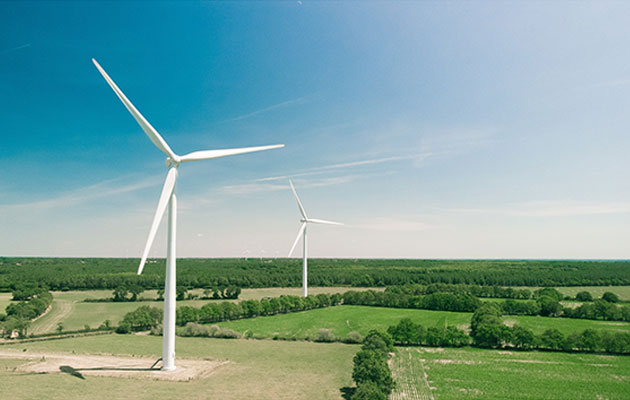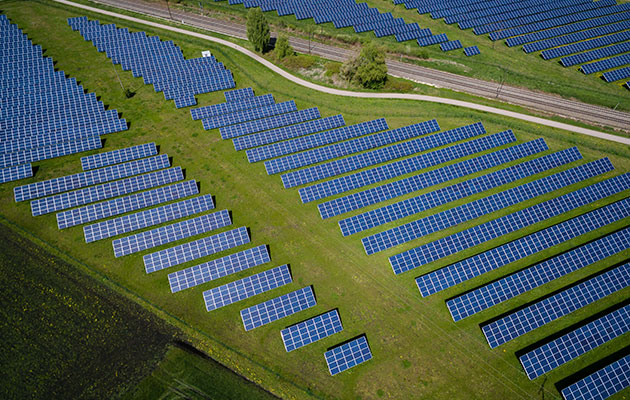-
Articles
Construction & Energy Law
LEG 3 – Does it Stand Up to Scrutiny?
Two American courts have criticized the wording of the popular LEG 3 defect exclusion clause as being ambiguous and convoluted.
Many power plant builders and developers consider LEG 3 the gold standard for defect liability insurance cover.
Although many commentaries from England downplay the impact of the American court decisions, the fact remains that English courts have not issued any decisions that support this rose-colored view of LEG 3 as currently worded.
Energy and construction projects, especially those outside England, should consider variations on the LEG 3 model wording when procuring or renewing defect insurance.
London Engineering Group
The London Engineering Group (“LEG”) is a consultative association for insurers and reinsurers active in the London construction and engineering markets for specified classes of insurance, including Construction All Risks (“CAR”) policies used in general construction, and Erection All Risks (“EAR”) policies frequently used in connection with the construction of power plants, to cover machinery and electromechanical equipment manufactured elsewhere and installed on-site.
LEG published three defect exclusion clauses in 1996, which have been adopted extensively, not only in the London market, but also in Europe, the Asia Pacific, and the Americas. LEG clauses typically are implemented by attaching them to an insurance policy as endorsements or extensions, and LEG 3 provides the widest form of cover for physical damage caused by defects1. LEG 3 was updated in 2006; the underlined text was scrutinized recently in the U.S. courts:
LEG 3/06
Model “Improvement” Defects Wording
“The Insurer(s) shall not be liable for
All costs rendered necessary by defects of material workmanship design plan or specification and should damage (which for the purposes of this exclusion shall include any patent detrimental change in the physical condition of the Insured Property) occur to any portion of the Insured Property containing any of the said defects the cost of replacement or rectification which is hereby excluded is that cost incurred to improve the original material workmanship design plan or specification.
For the purpose of the policy and not merely this exclusion it is understood and agreed that any portion of the Insured Property shall not be regarded as damaged solely by virtue of the existence of any defect of material workmanship design plan or specification”.
Decades without court guidance
There have been very few court cases anywhere relating to the interpretation of LEG 3. Before 2023, only the Acciona case2, in the Canadian courts, considered the wording of LEG 3; one case in England3 also referred to a summary of the LEG 3 wording, but no cases provided guidance on LEG 3 beyond commenting that LEG 3 generally (but not always, as was the case in Acciona) provides greater coverage than LEG 2.
The absence of court scrutiny could be due to the fact that many disputes relating to or arising from LEG 3 are resolved privately, through arbitration, as a result of the LEG dispute resolution clause (LEG DRC 1/12) which requires disputes to be resolved in English by a tribunal of three arbitrators seated in England.
Outside of England, insurance policies do not always incorporate the LEG dispute resolution clause, and instead may rely on local courts to resolve disputes, applying the laws (and sometimes the language) of the country in which the insured project is located. Thus, it is not surprising that the first major court decision on the interpretation of LEG 3 was issued by a court outside of England.
The U.S. court decisions
2023: District of Columbia
In the South Capitol Bridgebuilders case4, the United States District Court for the District of Columbia considered the application of the LEG 3/06 wording to a bridge construction defect.
The builder failed to apply sufficient vibration while pouring concrete for substructure components of a bridge. The resulting structural deformities decreased the load-bearing capacity of the relevant components to the extent that they could not support the planned weight of the bridge; the builder was required to make significant repairs, including sawing off and replacing the last seventeen feet of the defective structures. The builder claimed USD $2.2 million from the insurer, for the cost of repair work.
The defect liability endorsement in the insurance policy (“Extension”) contained wording identical to the second and third paragraphs of the model LEG 3/06 wording, apart from the insertion of commas between the following words:
“material workmanship, design, plan, or specification”
The insurer declined to pay the cost of repairs, based on its interpretation of the Extension, claiming that “damage” reimbursable under the policy did not include the cost of fixing the concrete flaws that weakened the bridge.
The court disagreed with the insurer and held that “damage” did include the cost of fixing the concrete flaws that weakened the bridge. The court’s view was that “damage” unambiguously encompassed the builder’s claim, but that other parts of the Extension were ambiguous, including the interpretation of the improvements exclusion.
Although the insurer’s arguments were unsuccessful, two elements of the insurer’s interpretation highlighted drafting issues in the Extension (and therefore the wording of LEG 3/06) that could arise in future claims involving LEG 3/06.
1. Damage. The insurer’s position was that the structures needed to be altered, not merely defectively constructed, to constitute “damage.” The court noted that in the Extension, “damage” included a “patent detrimental change in the condition of the insured property” and that this encompassed the reduction in the weight-bearing capacity of the bridge. However, the main policy terms referred to “damage” without defining the term, and the definition of damage in the Extension was limited to the purposes of the Extension.
Therefore, the court ruled that the definition of “damage” in the Extension was insufficient to determine, conclusively, whether a reduction in the weight-bearing capacity of the bridge constituted damage under the main terms of the policy, and the court was required to assess the parties’ intent and the overall purpose of the policy as a whole, in light of the plain, ordinary, and popular meaning of the term “damage.”
The takeaway for new LEG 3/06 policies or renewals is: (i) to identify whether “damage” is defined in the main terms of the policy or whether the meaning of “damage” is sufficiently clear under the law applicable to the policy, and (ii) to consider whether the definition of “damage” in the second paragraph of the LEG 3/06 endorsement should apply to the entire policy, by cutting and pasting wording from the final paragraph of LEG 3/06 to state that the definition applies “for purposes of the policy and not merely this exclusion.”
2. Improvements. The insurer’s position was that simply repairing or replacing defective work constitutes an “improvement” and that the cost incurred to improve the original workmanship should be excluded. The builder’s interpretation of the exclusion was that to “improve” original workmanship means to make it better than originally planned.
The court regarded both interpretations as reasonable, but noted that the Extension made a distinction between the “cost of replacement or rectification” and the “cost incurred to improve,” and held that the context of the Extension suggested that “to improve” means to make a thing better than it would have been if not for the defective work.
The ongoing issue is whether future court decisions on LEG 3 will exclude only the cost of improvements over and above the remediation of defects, or whether they will exclude the entire cost of remediation of the defect for undamaged parts of the insured property; however, the potential difference in the cost of these two approaches is enormous.
2024: Florida
The second recent judgment arose from a strike-out application brought by insurers before the Miami Division of the Southern District of Florida5 in January 2024, on facts similar to the South Capitol Bridgebuilders case, although in this case the defect exclusion was based on LEG 3/96 which does not have the wording “(which for the purposes of this exclusion shall include any patent detrimental change in the physical condition of the Insured Property)” to clarify the definition of “damage.”
The Florida judge relied heavily on the findings in the South Capitol Bridgebuilders case in dismissing the application, and noted the D.C. Court’s comments on the definition of “damage.” In addition, the word “improvement” was held to be ambiguous, and therefore construed against the insurer.
Given the recent treatment of the LEG 3 wording by these two U.S. judges, it is likely that further commentary will come from the substantive hearing in this latter case, assuming it proceeds to trial.
Is an Australian decision imminent?
The Inpex case6, which involves ongoing claims arising from an LNG project, brought against twenty-five insurer defendants under a LEG 3 exclusion in an EAR policy and a LEG 2 exclusion in a CAR policy, was heard by the Supreme Court of Western Australia.
The court noted that the parties are in a “heated dispute as to the proper construction and effect of the LEG 2/96 Exclusion and the LEG 3/06 Exclusion” and appear to “view the exclusion clauses through entirely different prisms.” The insurer’s interpretation is very much at odds with that of the party that bought the insurance policy.
As of late 2023, the proceedings appeared to be in the early discovery stage, and it is not clear when the Supreme Court of Western Australian will be called upon to construe the LEG exclusion clauses; however, the court acknowledged that proper construction of the LEG clauses will be something of a “greenfield site,” which suggests that we can expect the resulting judgment to be considered carefully and extensively.
Profound lack of listing commas in LEG 3
In Inpex, the court suggested that the terms of the LEG 3/06 Defect Exclusion in the EAR policy are identical to the standard wording of the LEG 3/06 Exclusion7, but on close examination there is a small, but potentially significant, difference, which arises from the insertion of listing commas between the following words:
“material, workmanship, design, plan or specification”
At first sight, this may seem non-contentious, and merely to involve the insertion of commas where they ought to have been located in the first place; however, it has the effect of creating a five-item list, which differs from the Exclusion in South Capital Bridgebuilders, where there were only four commas, and material workmanship was treated as a compound, single entry:
“material workmanship, design, plan, or specification”
Thus, the Exclusion in South Capital Bridgebuilders would not apply to a defect in materials, but the exclusion in Inpex would apply to such a defect.
The Spanish version of LEG 3/068 , published by the LEG, also contains four items, but “design plan” is the compounded item, and “material” and “workmanship” are separate:
“(1) material; o (2) mano de obra; o (3) plan de diseño o (4) de especificaciones”
The interpretation of how many items appear on the list, and the identities of those items, will be even more complicated for policies that use the original LEG 3/969 wording, as it does not contain the word “or” between “plan” and “specification”:
“material workmanship design plan specification”
It is important to note that, the fewer items on the list, the narrower the scope of the LEG 3 exclusion.
Implications for Latin America, Asia, and Europe
The current wording of LEG 3 provides lawyers in English-language proceedings with a wealth of opportunity to put forth competing interpretations of the extent of the exclusion and the meaning of “damage” and “improvement.” This opportunity is even richer in countries in which English is not the official language, and where agreements need to be translated into the local language, either before execution or to enforce the agreement in court (or through arbitration).
Getting lost in translation is a very real risk, even in Europe, where the vast tomes of English case law can not be relied on to clarify what is meant by terms as basic, yet important, as damage, workmanship, rectification and improvement.
It is not unusual for an insurance policy to be written in parallel, with an English language version and a local language version, in countries outside the Anglosphere, with the parties agreeing that the English version will prevail in the event of any inconsistencies. However, in many civil law jurisdictions (including much of Latin America and Asia), local law can require the local language version to prevail, no matter what the parties have agreed. In many of these countries, reinsurers will find themselves bound by the policy wording in the local language, and by the interpretation of that wording under local law.
Therefore, the local wording is vitally important in many countries outside England, and given that different interpretations of the English-language version of LEG 3 exist, translation of LEG 3 in its current form could exacerbate the interpretation problem; in some cases, revised wording will be essential to ensure the local language version is able to convey the intent of the LEG 3 exclusion accurately.
Anticipated Response by LEG
The LEG articles of association prohibit the LEG from discussing specific named risks, projects, insureds, or claims unless the information is in the public domain. This limits the LEG’s ability to revise LEG clauses to accommodate decisions from arbitral proceedings (which typically are conducted privately) but does enable the LEG to address issues raised in open court, as it did when preparing LEG 3/06 to accommodate the Skanska case10.
Even though the LEG did not regard the comments in Skanska as bringing LEG 3/96 into question or causing any basis for concern, the LEG still opted to revise LEG 3, to remove any doubt about arguments as to the meaning f “damage” to defective property.
The objectives in LEG’s articles of association relate to the London construction and engineering markets, and the LEG would be justified in disregarding the decisions of courts outside England; however, as eight of the defendants in the Inpex case are Lloyd’s syndicates, it is possible that the views of foreign courts will be of immediate concern to members of the LEG, and reasonably foreseeable that the LEG may reconsider the current wording of LEG 3, in light of the reluctance of foreign courts to interpret LEG 3 in a manner that aligns with the interpretation of many insurers.
When updating LEG 3 to accommodate Skanska, the LEG indicated that the intent of underwriters under LEG 3 was to meet the cost of replacing or repairing defective property that has been damaged, excluding only the cost of improvements. What constitutes damage is open to argument, but American courts currently interpret “damage” more broadly than many insurers believe it should be. It also is not clear, at present, whether “improvement” means (i) remediation of a defect, or (ii) improving a non-defective situation.
Clarification would be a welcome development, given that these issues are very much alive and have profound implications on the cost of remedying defects, depending on whether the defect is in workmanship, design, or materials.
1LEG 1 is an outright exclusion of all loss and damage due to defects in material workmanship design plans or specifications, and LEG 2 excludes the hypothetical cost of retroactive replacement or remediation prior to damage. The LEG clauses are available at https://www.londonengineeringgroup.com/leg-clauses
2Acciona Infrastructure Canada Inc. v. Allianz Global Risks US Insurance Company 2014 BCSC 1568 and on appeal in 2015 BCCA 347
3R. (on the application of Gwynt-y-Môr Offshore Wind Farm Ltd) v Gas and Electricity Markets Authority [2019] EWHC 654 (Admin)
4S. Capitol Bridgebuilders v. Lexington Ins. Co., 21-cv-1436 (RCL), (D.D.C. Sep. 29, 2023)
5Archer Western – De Moya JV v ACE American Insurance Co., Case No. 1:22-cv-21160-Goodman
6Inpex Operations Australia Pty Ltd v AIG Australia Ltd [No 2] [2023] WASC 61
7At paragraph 49 [2023] WASC 61
10Skanska Construction Ltd v. Egger (Borony) Ltd (2003) Lloyd’s Rep IR 479 which related to a building contract rather than an insurance contract, and in which one of the judges made supplementary comments regarding the rectification of defects.









Chris has been based in Thailand since 2001 and has more than two decades of experience working alongside Thai lawyers on cross-border M&A and regulatory matters, providing international-level solutions to companies entering the Thai market. His clients include global companies investing or acquiring assets in Thailand and Thai companies engaging in cross-border transactions. He advises international and Thai companies on the development, sale, and acquisition of renewable energy projects in Thailand and across Asia.
His M&A practice has included private M&A, advising institutional and activist investors on SEC/SET reporting requirements and acquisition thresholds, and strategic shareholders on synergistic de-layering of listed group structures. His sector expertise for M&A includes manufacturing, TMT, logistics, renewable energy projects, and the service sector for both buy-side and sell-side, share and asset sale transaction structures. He has advised overseas law firms on the acquisition of Thai law firms.
With a focus on renewables (including transition), Chris’ energy practice has more than 1 GW’s experience in onshore wind, solar (PV, thermal, ground mount utility scale, and C&I rooftop), and waste-to-energy projects. His experience has a broad reach, from due diligence of early-stage projects, advising on EPC/O&M, corporate PPAs, equity funding, and project finance, to pre- and post-commissioning exits and acquisitions.